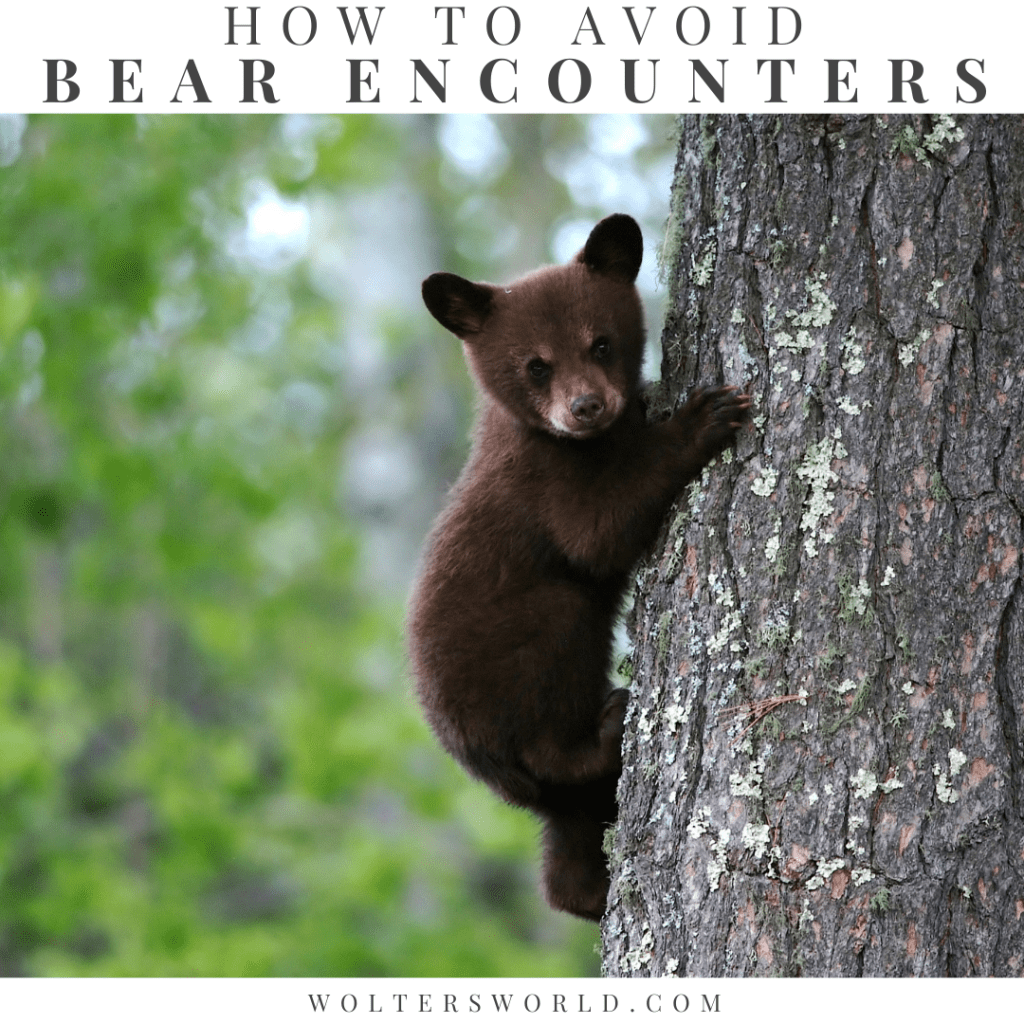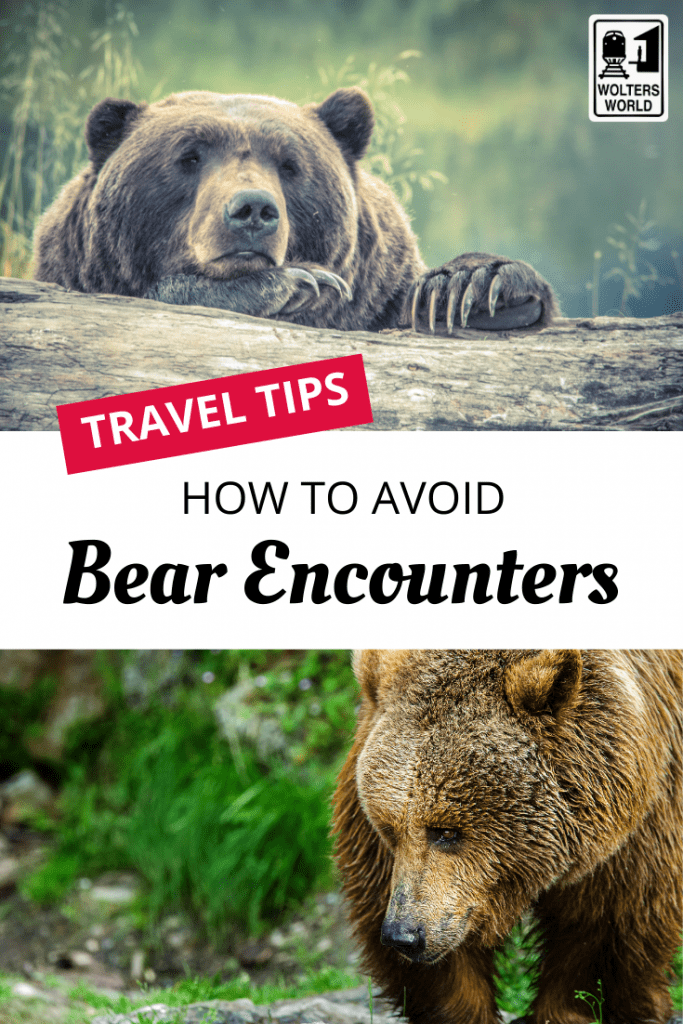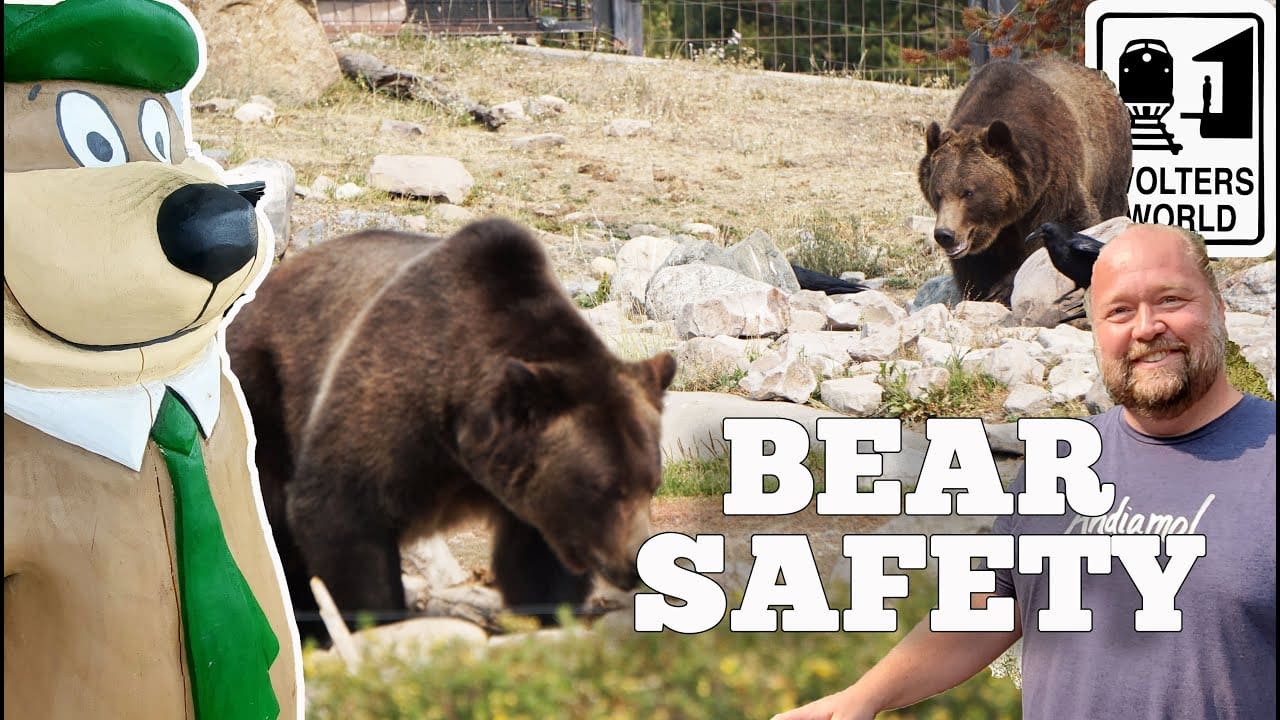Hey there, fellow travelers! This summer, we spent a lot of time in the American West. Also known as the Wild West, or bear country. While black bears are pretty common in many parts of the United States, grizzly bears are found in just a few American states like Wyoming, Montana, and Idaho. National Parks like Yellowstone are a popular place to see grizzly bears in their wild habitat. But before you visit bear country, there are some things you need to know!

Bears Are Not Friendly
Sometimes, bears can seem very playful, almost like puppy dogs. Especially the little bear cubs. But they are not! They are wild animals, and they will protect their food and their young.
What NOT to Do At Grand Teton National Park
Always Maintain 100 Yards Distance
The minimum distance you should have between you and a bear is 100 yards. That sounds like a pretty safe distance, but a grizzly bear can cover 100 yards in six seconds. That’s not much time to think about what you’re going to do if they start to charge. Bring a telephoto lens if you want to photograph the bears.
Bears Aren’t Confined to the Parks
Glacier National Park and Yellowstone and other parks are great places to see bears. But you might also see them outside of the parks. That’s right, the bears don’t recognize our artificial boundaries; they wander in and out of the parks as they please. So don’t let your guard down just because you have left the National Park.

Carry Bear Spray and Know How to Use It
Bear spray is proven to be one of the best ways to prevent a bear attack, once the bear is already charging you. Of course, avoiding a charge is the best approach, but sometimes that’s not always possible. Even more important than carrying bear spray is knowing how to use it. If you have it tucked away in your backpack, it’s of no use when a bear is closing in on you.
- Keep it holstered on your belt or backpack, in easy reach
- Know where the safety is and how to remove it
- Spray in short bursts so you don’t run out
Don’t Feed the Bears
There’s a saying in bear country: A fed bear is a dead bear. A bear that is fed by humans, either intentionally or unintentionally, will likely become accustomed to humans and have to be killed. By storing your food properly, you are ensuring that you and the bears all stay safe. Bears can easily break into a car or chest cooler to steal your food, and they have an impeccable sense of smell. If you are camping, the campground will give you strict instructions on how and where to store your food. (Hint: NOT in the tent!) If you are camping, you will have to hang your food at least 10 feet off the ground and four feet from the tree base, as bears can easily climb trees.
What NOT to Do at a National Park
Be Careful When Hiking
If you are hiking in bear country, it’s entirely possible that you will run into a bear. However, there are things you can do to avoid running into bears and ensuring you all keep a proper distance. The best bear safety tips for hiking are:
- Make Noise – the best thing you can do to avoid a surprise bear encounter is to make noise while you hike. If bears hear you coming, they will get out of the way.
- If you’re hiking near a stream, make sure you are louder than the stream
- Safety in numbers – if you can, hike in a group. A group of people is way more intimidating to a bear than just one person.
- Avoid blind corners; be extra loud if you are going around a blind corner. You might even toss a rock or something ahead of you on the trail.
Grab Some Wolters World Travel Gear!

It’s entirely possible to enjoy a bear sighting from a distance or from the safety of your car. If you do spot a bear, enjoy the moment and consider yourself lucky. If you follow these basic bear safety steps and guidance from the park rangers, you’ll be bear aware and stay safe! Looking for more family travel tips? Check out these other blog posts:
